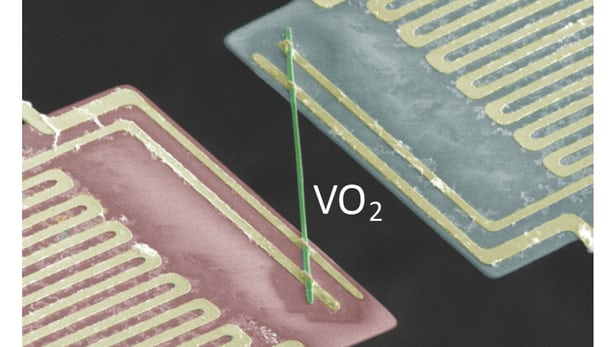
Breaking News
 Trump, Treason, and the New York Times
Trump, Treason, and the New York Times
 Democrat idiocy at work in San Francisco
Democrat idiocy at work in San Francisco
 BREAKING THROUGH Tesla AI in 2026
BREAKING THROUGH Tesla AI in 2026
Who Was The Biggest Antisemite In 2025?
Top Tech News
 Laser weapons go mobile on US Army small vehicles
Laser weapons go mobile on US Army small vehicles
 EngineAI T800: Born to Disrupt! #EngineAI #robotics #newtechnology #newproduct
EngineAI T800: Born to Disrupt! #EngineAI #robotics #newtechnology #newproduct
 This Silicon Anode Breakthrough Could Mark A Turning Point For EV Batteries [Update]
This Silicon Anode Breakthrough Could Mark A Turning Point For EV Batteries [Update]
 Travel gadget promises to dry and iron your clothes – totally hands-free
Travel gadget promises to dry and iron your clothes – totally hands-free
 Perfect Aircrete, Kitchen Ingredients.
Perfect Aircrete, Kitchen Ingredients.
 Futuristic pixel-raising display lets you feel what's onscreen
Futuristic pixel-raising display lets you feel what's onscreen
 Cutting-Edge Facility Generates Pure Water and Hydrogen Fuel from Seawater for Mere Pennies
Cutting-Edge Facility Generates Pure Water and Hydrogen Fuel from Seawater for Mere Pennies
 This tiny dev board is packed with features for ambitious makers
This tiny dev board is packed with features for ambitious makers
 Scientists Discover Gel to Regrow Tooth Enamel
Scientists Discover Gel to Regrow Tooth Enamel
 Vitamin C and Dandelion Root Killing Cancer Cells -- as Former CDC Director Calls for COVID-19...
Vitamin C and Dandelion Root Killing Cancer Cells -- as Former CDC Director Calls for COVID-19...
Bizarre metal conducts electricity without heating up

In an apparent contradiction to textbook physics, a metal has been identified that conducts electricity but produces almost no heat in the process. Such a strange property may be expected to occur in conductors operating at cryogenic temperatures, but a team of researchers led by the Lawrence Berkeley National Laboratory claims to have discovered this unique property in vanadium dioxide at temperatures of around 67 °C (153 °F).
Of all the metals found on Earth, most are both good conductors of heat and electricity. This is because classic physics dictates that their electrons are responsible for both the movement of electrical current and the transfer of heat. This correlation between electrical and thermal conductivity is dictated by the Wiedemann-Franz Law, which basically says that metals that conduct electricity well are also good conductors of heat.
However, metallic vanadium dioxide (VO2) seems to be different. When the researchers passed an electrical current through nanoscale rods of single-crystal VO2, and thermal conductivity was measured, the heat produced by electron movement was actually ten times less than that predicted by calculations of the Wiedemann-Franz Law.
"This was a totally unexpected finding," said Professor Junqiao Wu, a physicist at Berkeley Lab's Materials Sciences Division. "It shows a drastic breakdown of a textbook law that has been known to be robust for conventional conductors. This discovery is of fundamental importance for understanding the basic electronic behavior of novel conductors."
And what a novel conductor VO2 is.
When heated to 67 °C (153 °F), vanadium dioxide undergoes an abrupt transition from an insulator to a conductor, as its crystal structure transforms. This structural alignment of VO2 into a metal provides clues as to why the material is able to transfer electrical current with negligible heating.



